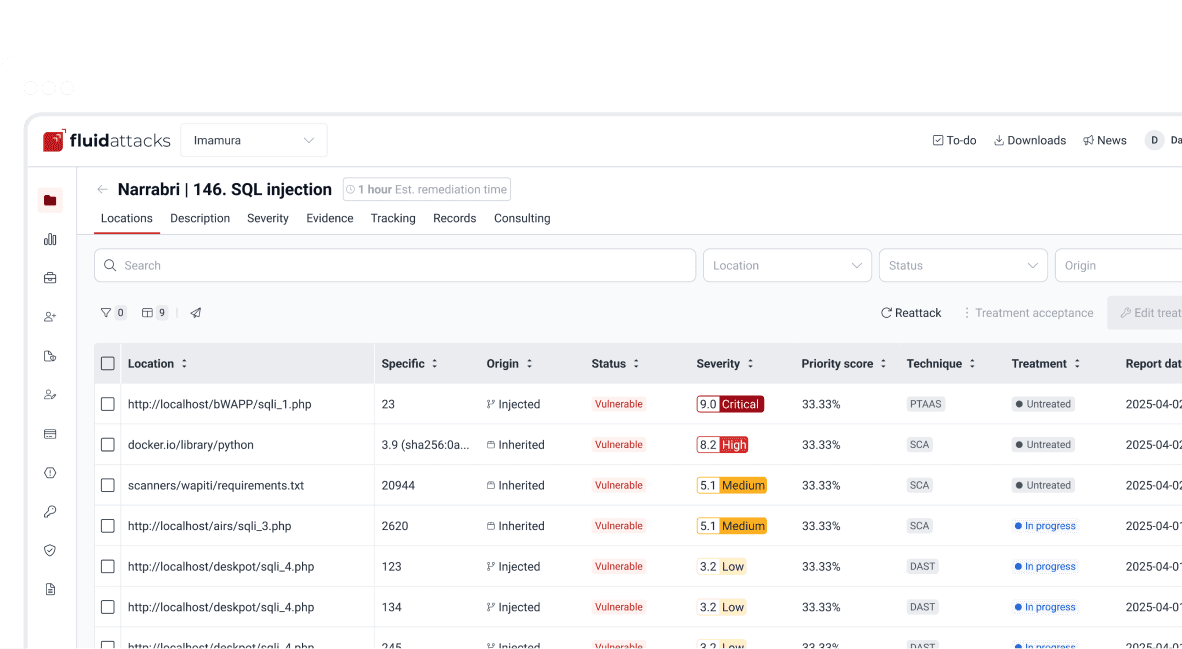Ataques
Understanding Data Execution Prevention (DEP): Let's protect the stack

VP of Hacking
Actualizado
21 ago 2020
5 min
In past blog entries, we’ve written a good amount of articles dealing with Windows exploit development, most of them attacking Vulnserver, a vulnerable-by-design (VbD) server that, as can be easily guessed, is designed for such a noble endeavor. We also wrote a couple of articles creating an exploit for QuickZIP and MiTec Net Scanner. All of those exploits relied on the ability to execute instructions written on the stack of the process.
However, modern CPUs have a mechanism that allows the OS to prevent that.
In this article, we will introduce that protection and in forthcoming articles, we will check a way to bypass it, called ROP (Return-Oriented Programming).
No-Execute bit
The protection on the CPUs is known as the NX (No-Execute) bit. The OS will use such capability to mark some memory areas (remarkably, the stack) as non-executable and thus, prevent common buffer overflow exploits like the ones we’ve used so far. Let’s clarify that.
In x86 architecture, when a function is called, a function frame is created on the stack. This is a common function stack frame distribution on memory:
Common function stack frame.
On a simple buffer overflow, when we write past the vuln_var size, we can overwrite anything that’s below the stack, including the Saved EBP and Saved EIP. When the vulnerable function returns, it will get the Saved EIP value back from the stack and use it as the next instruction pointer. That’s why we usually overwrite the Saved EIP with a pointer to a JMP ESP instruction that allows us to redirect execution back to the stack on where we put the shellcode.
Example overflowed vuln_var.
For example, let’s take a look a this exploit:
This is a simple exploit that will take advantage of a buffer overflow vulnerability of the Vulnserver TRUN command. Here you can see the full writeup of how to find that vulnerability using fuzzing and here using reverse engineering.
This version of the exploit will overflow the vulnerable variable this way:
Example overflowed vuln_var.
Where:
2,006
As are added to trigger the overflow.0x625011AFis a pointer to aJMP ESPinstruction and will be placed onSaved EIP.When the vulnerable function returns, it will execute the instruction pointed by
Saved EIPwhich holds theJMP ESPinstruction.With that, the execution flow is now redirected to the stack where the shellcode was placed.
The shellcode, in this case will execute three arbitrary instructions:
xor eax eax→ Zero-outsEAXregisteradd al,0x8→ MakesEAX=0x00000008nop→ Does nothing
Let’s see it in action:

As you can see, we were able to execute the instructions on our shellcode that we placed on the stack, as expected.
Enabling DEP
On modern Windows versions, the NX bit of the CPU can be leveraged by using a feature called Data Execution Prevention or DEP. An application can be compiled with the /NXCOMPAT flag to enable DEP for that application. Also, you can use editbin.exe /NXCOMPAT over an .exe file to enable it on an already compiled file.
In a debugger, we can check if an executable has that flag enabled:

You can also enable DEP system-wide, which will force DEP to all applications, including those compiled without /NXCOMPAT. To do that, you can use the following instructions:
Press the
Windowskey and search forView advanced system settings.In the resulting window, click on the tab
Advanced:

Then in
Performanceclick onSettings.Move to the tab
Data Execution Prevention:

The default setting is
Turn on DEP for essential Windows programs…, but to turn it on for every application, you must selectTurn on DEP for all programs….Apply and restart the PC.
WARNING: When you change this value and you have Bitlocker enabled, you will be asked to enter the Bitlocker recovery key after the reboot. If you don’t have that information, please don’t change the DEP value or your system will become unusable.
With that in place, we can check our exploit again to see if DEP really prevents the execution of the instructions of our shellcode.
NOTE: We will talk about Hardware-based DEP, which uses the NX bit of the CPU to mark memory regions as non-executable. Software-based DEP will only prevent SEH-based overflows, and that’s not in the scope of this article. You can get more information on SEH-based exploits here.
Executing shellcode with DEP enabled
Now, after enabling DEP system-wide, let’s execute our exploit again:

Several things have happened:
The overflow is performed.
The
Saved EIPvalue was overwritten successfully with the pointer toJMP ESP.The
JMP ESPinstruction is performed and execution flow is redirected to the stack where our shellcode is placed.However, when it tries to execute the first instruction on the shellcode (
xor eax,eax), anAccess violationexception is triggered, which means that it was trying to execute code on a memory region marked as non-executable.DEPworked.
Bypassing DEP
Now, we cannot execute instructions placed on the stack, but we control the execution flow of the application. However, the stack is a place where the application (and therefore, the exploit) can read and write data and by controlling both (the execution flow and the stack), we can do wonders.
In the previous example, we couldn’t execute the instructions on the shellcode, but we were able to execute a single instruction: JMP ESP. We did that by placing the pointer to the instruction in the right place.
We can use that to run arbitrary code, without executing a single instruction on the stack. Let’s welcome Return-Oriented Programming.
Conclusions
This article shows a mechanism created to prevent the exploitation of buffer overflow vulnerabilities. DEP surely renders common exploits unsuccessful. However, in the next article we will see how to bypass DEP using Return-Oriented Programming and later we can create a fully working exploit that triggers a reverse TCP shell on a DEP-enabled application.
At Fluid Attacks, we probe security measures to find weaknesses. We do that in research but also perform red teaming operations for software development companies. Right now we offer a 21-day free trial of our vulnerability scanning. You can upgrade at any time to include manual security testing, such as penetration testing, by our pentesters.
Get started with Fluid Attacks' PTaaS right now
Suscríbete a nuestro boletín
Mantente al día sobre nuestros próximos eventos y los últimos blog posts, advisories y otros recursos interesantes.
Otros posts














